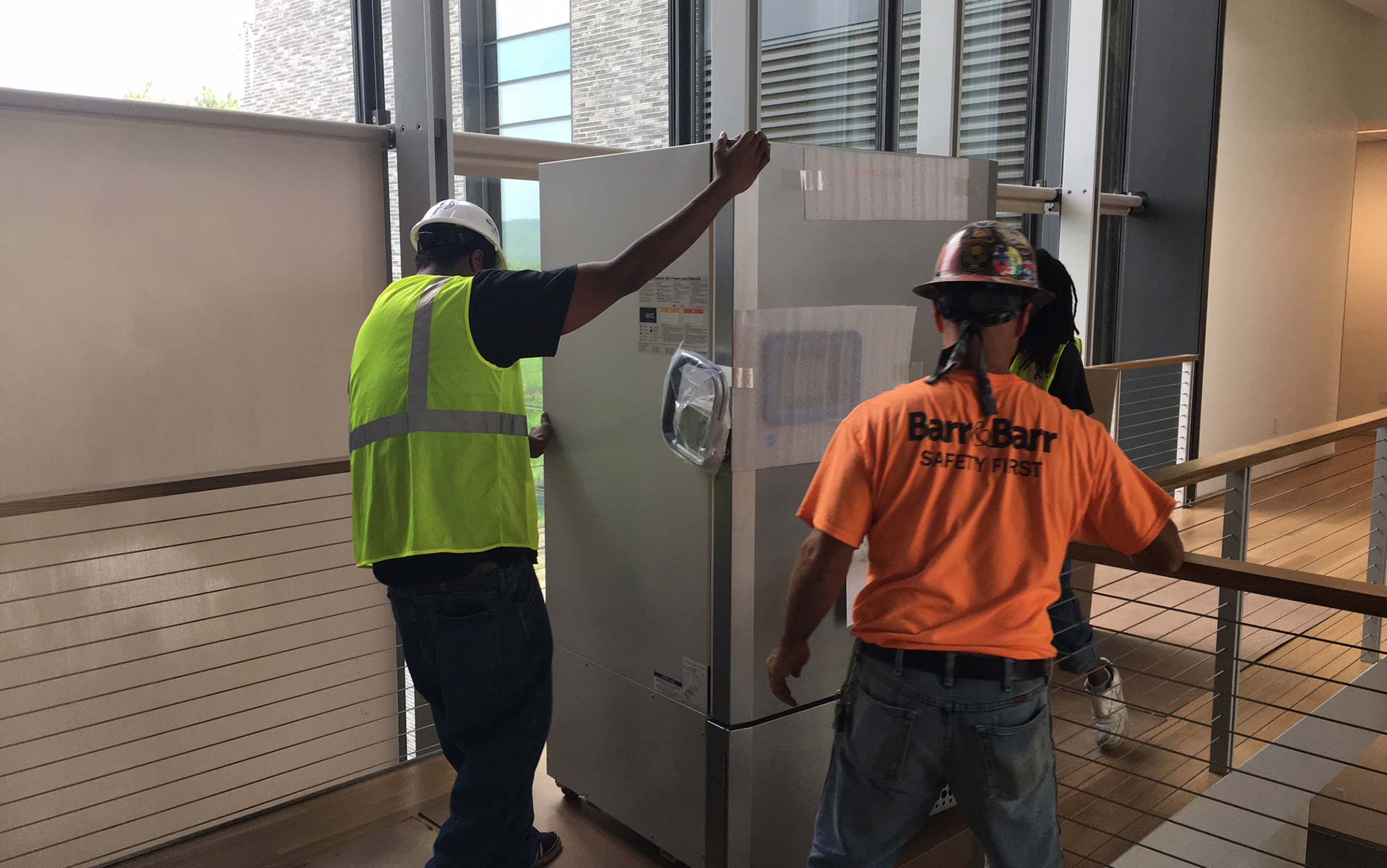
Jess Martin is on a mission—and it involves a lot of large, neon green stickers. She first stops into an intro biology lab in the Merrill Science Center, where a giant, white Westinghouse freezer bears the aging notices “chemical use only” and “yeast plates here.” Martin, administrative director of the soon-to-open Science Center, pulls out a measuring tape, takes the dimensions of the equipment and slaps a sticker on the front.
“It’s unbelievable how old some of the things are,” Martin says she reads the name on the side of the next fridge on her list. “Hotpoint. The last year they made this fridge was 1977.”
Together with Laura Draucker, director of sustainability, Martin has been quietly replacing the science faculty’s aging and most electricity-hogging fridges and freezers. The project, which is the first to use the College’s Green Revolving Fund, involves 32 pieces of equipment and is expected to pay for itself in roughly 11 years.
The Green Revolving Fund was established by Prince Albert Grimaldi ’81 of Monaco in 2016 for sustainability projects on campus. By financing projects that reduce energy use and greenhouse gas emissions, and then reinvesting that savings, the fund is designed to be self-sustaining.
Science refrigerators and freezers, although not the most highly visible equipment on campus, are in several ways ideal for the Green Revolving Fund. Their replacements—four minus 80-degree Celsius freezers, 14 scientific freezers and fridges, 12 conventional freezer-top fridges and two chest freezers—will save approximately 51,300 kilowatt hours each year in electricity.
“Some fridges are so bad, they’ll pay for themselves in a year,” says Draucker. “It’s the icing on the cake of energy savings.”
The existing pieces of equipment have lasted so long, even surviving previous moves, because there was no real incentive to replace them, Draucker says: the energy cost is absorbed by the College’s bottom line, and departments don’t see the bill, so there’s little motivation for academic departments to push for upgrades—especially if existing equipment still works well.
What’s more, says Professor of Biology Caroline Goutte, who chairs her department, “Every time you get a new freezer, you don't know whether you can trust it. We always have a bit of hesitation when we put our entire career into a brand new box and plug it in and have to walk away and assume it will work. But, that would be the case anyway, moving into a new building.”